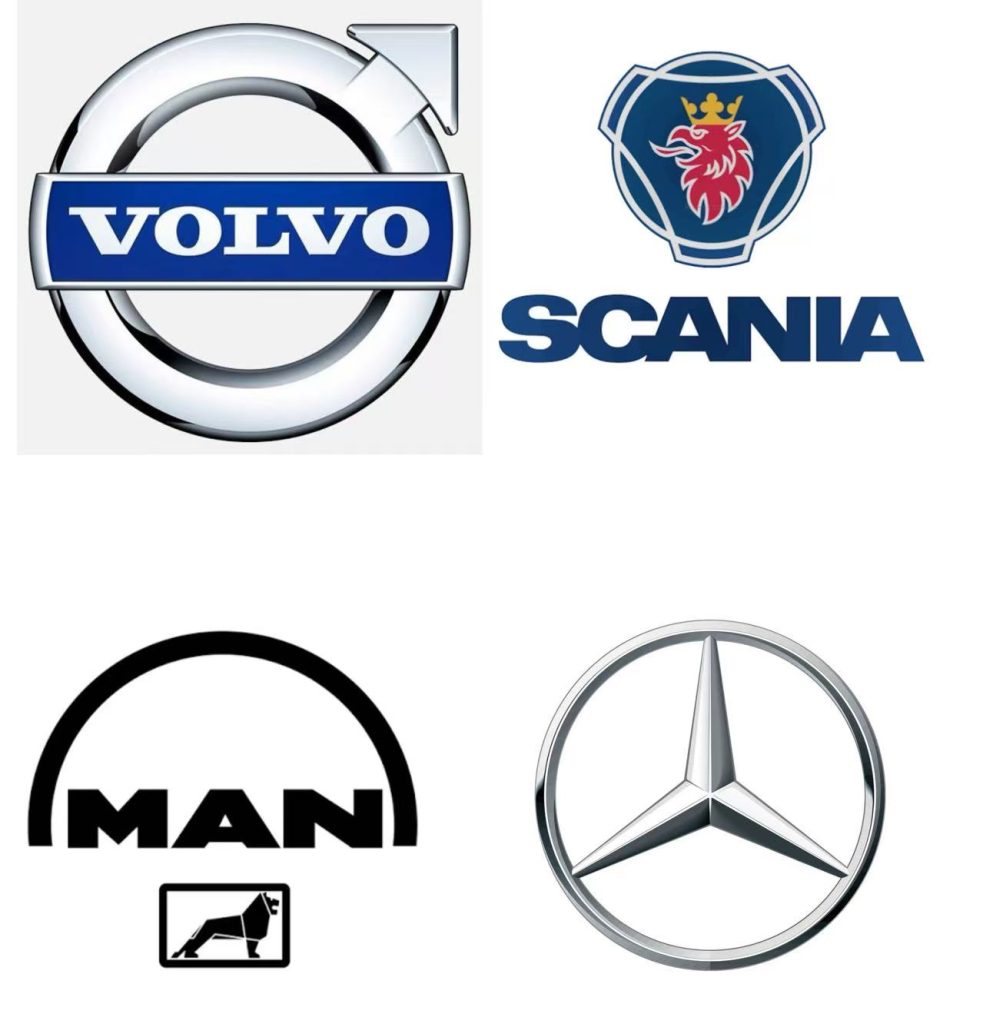European trucks are building factories in China for production.

1. Volvo Trucks
In March 2025, the construction of a new factory (Volvo Trucks’ production base in Taiyuan, China) will commence in the old factory area of Taiyuan Heavy Industry. The initial production capacity will be 30,000 vehicles, and it is scheduled to start production in 2027.
Domestic version: It is simply the current FH (latest generation) platform.
Estimated price: It is most likely to be within the range of 900,000 – 1,200,000 yuan (about 20,000 – 30,000 yuan cheaper than fully imported models, but it won’t drop to 700,000 – 800,000 yuan).
2. Scania
In 2024, a deep cooperation was reached with Shandong Heavy Industry (China Heavy Truck). The Uruo factory began renovations in 2025, and it is expected to enter production by the end of 2026 or the beginning of 2027.
Domestic models: The latest R/S series (in sync with Europe).
Estimated price: 900,000 – 1,300,000 yuan, roughly in the same price range as Volvo.
3. MAN
In 2023, a joint venture “Xigang Man” was established with China Shagang. In 2025, small-scale domestic production of the new TG series (2024 European Truck of the Year) began.
Currently, it has been quietly registered in some areas, with prices ranging from 850,000 to 1,100,000 yuan, which is 30,000 to 40,000 yuan cheaper than fully imported models.
This can be regarded as the earliest European brand to achieve true mass production in China.
4. Mercedes-Benz Trucks
The approach taken is indeed a “specialized model” strategy. The joint venture between BAIC Foton and Daimler-Benz, Beijing Foton Daimler, is developing a brand-new “China-specific version” of the Actros (the code name might be Actros C).
It’s not simply taking the current European model and reducing its features. Instead, it’s using a completely new platform (while retaining the core technologies of Mercedes-Benz, the wheelbase, configuration, and powertrain have all been redesigned to suit Chinese conditions).
Expected price: It is likely to mainly target the 55-800,000 yuan range, directly competing with the high-end versions of the J7 and JH6 of Foton, the Chongqing Automobile of FAW, and other domestic high-end vehicles.
This is the one that truly aims to “compete on price”.
The actual impact on truckers
1. Rich landowner enthusiasts (with a budget of 1 million or more)
You guys can finally wait now!
- There’s no need to wait for 8-12 months for the shipment. You can get the vehicle within 3-6 months after placing the order.
- The after-sales service outlets will be rapidly expanded (especially for Volvo and Scania, who have emphasized this point very clearly).
- The residual value will be higher. The second-hand market will recognize that “the domestic new Omega” is more valuable than “the fully imported old model”.
2. Middle-class car buyers (budget ranging from 600,000 to 900,000)
The most awkward yet happiest group:
- Original imported cars will be quickly withdrawn from the market or significantly discounted to clear the inventory (the discounts have already started now).
- The prices of domestic MAN, Volvo, and Scania vehicles still start at 900,000 yuan, and it will be difficult to drop below 800,000 yuan in the short term.
- However, domestic high-end models (J7 Navigator Edition, JH6 Smart Edition, Tianlong Supreme KX, Chonglong H7 Golden Generation, etc.) will be forced to reduce their configurations or prices, and their cost performance will be higher.
3. Ordinary cardholder (budgeting around 500,000 yuan)
You are the ultimate winners!
This “China-specific Actros” model of Mercedes-Benz is most likely aimed at you. With around 600,000 yuan, you can drive a car with the Mercedes-Benz pedigree. This was unimaginable just five years ago.
Meanwhile, domestic high-end brands such as Jiefang, Dongfeng, and Sinotruk, in order to retain their market share, will definitely offer significant discounts (now the top-end model of J7 has already been sold for 48-50 million yuan for the complete vehicle, and if the competition continues, 45 million yuan might be achievable).
Summary sentence:
The domestic production of European trucks is not aimed at “making everyone drive cheap imported cars”, but rather:
High-end enthusiasts can purchase newer European original vehicles, + Ordinary truck drivers can buy better domestic high-end vehicles at lower prices
Both ends benefit, while those in the middle who want to spend 900,000 yuan to buy a new European truck might be a little disappointed.
